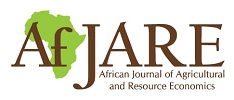Does adoption of improved soybean varieties and their complementary agronomic practices enhance household food security among smallholder farmers in Malawi
Soybean is one of the key legume crops that provides several financial benefits for farming households in Malawi. However, Malawi’s persisting efforts to improve smallholder productivity and diversification have only translated into moderate improvements in food security outcomes.
